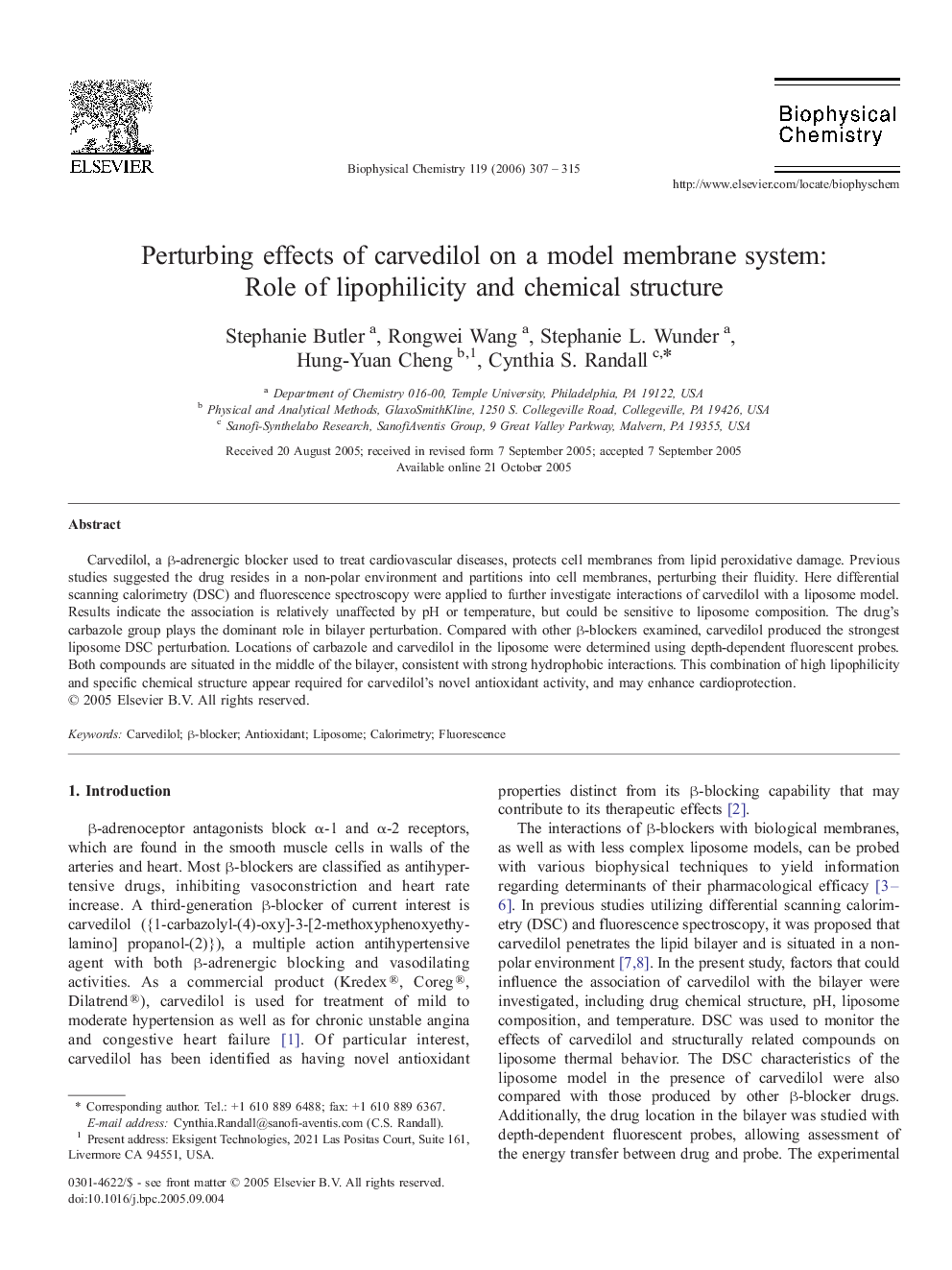| Article ID | Journal | Published Year | Pages | File Type |
|---|---|---|---|---|
| 5372521 | Biophysical Chemistry | 2006 | 9 Pages |
Carvedilol, a β-adrenergic blocker used to treat cardiovascular diseases, protects cell membranes from lipid peroxidative damage. Previous studies suggested the drug resides in a non-polar environment and partitions into cell membranes, perturbing their fluidity. Here differential scanning calorimetry (DSC) and fluorescence spectroscopy were applied to further investigate interactions of carvedilol with a liposome model. Results indicate the association is relatively unaffected by pH or temperature, but could be sensitive to liposome composition. The drug's carbazole group plays the dominant role in bilayer perturbation. Compared with other β-blockers examined, carvedilol produced the strongest liposome DSC perturbation. Locations of carbazole and carvedilol in the liposome were determined using depth-dependent fluorescent probes. Both compounds are situated in the middle of the bilayer, consistent with strong hydrophobic interactions. This combination of high lipophilicity and specific chemical structure appear required for carvedilol's novel antioxidant activity, and may enhance cardioprotection.
